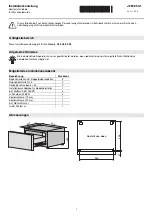
GETTING STARTED
HARDWARE
The Digital Sensor Array is a self-contained pressure scanning system. It requires minimal interfacing by
a user.
1)
Mount the Digital Sensor Array to the test fixture using the mounting holes provided or the
Mounting Bracket provided with the unit. The mounting bracket may be mounted on the
side of the module. Mounting dimensions and other information may be found in figures 2
and 3.
2)
C28Vdc to the unit. Wiring information may be found in figure 7.
3)
If the module is a DSA 3217 or DSA 3218 and the IP Address must be modified to operate
in the user’s network, the RS232/Trigger cable must be connected. The IP Address can only
be modified by following the DSA3200 Boot Parameter Modification procedure in the
DSA3200 Software Specification. The DSA Software Specification is a separate manual.
If the module is a DSA 3017 or DSA 3018, the IP Address is changed using the IPPADDR
command and can be done through ethernet communications.
4)
Connect the Ethernet link. Refer to page 14 for more information on the Ethernet
connections.
5)
If external triggering is to be used, connect the Trigger Input. Wiring information may be
found in figures 8 and 9.
6)
Connect the Control Pressures. Control pressure are explained starting on page 15.
Control pressure truth tables may be found on pages 15 and 17.
7)
Connect the Px inputs.
8)
Allow a minimum of 30 minutes for warmup. However, in many cases, a one hour warmup
is preferred.
9)
When the sensor temperatures have stabilized, execute a CALZ command before acquiring
data. If the module, and sensor temperatures, change more than 3 degrees C between data
points, the CALZ command should be executed before acquiring the data.
SOFTWARE
Communication with the Digital Sensor Array must use one of the following methods:
a) Ethernet (10base-2 or 10Base-T) TCP/IP or UDP
b) National Instruments LabVIEW*
c) Scanivalve Corp DSALink3
d) Windows* HyperTerminal
e) Scanivalve Corporation’s LabVIEW** Configuration Utility
* Windows is a registered trademark of Microsoft Corporation.
** LabVIEW is a registered trademark of National Instruments, Inc.
4








































